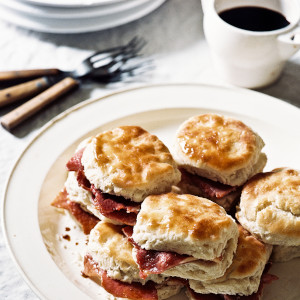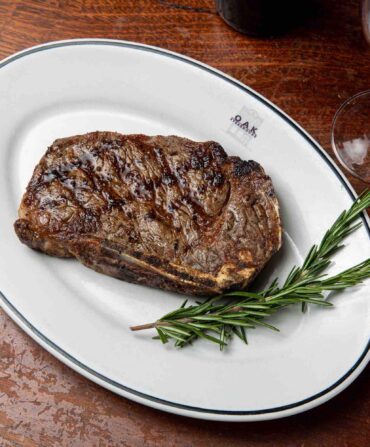It’s a good thing Greg Peters is a big fan of cooking with cast iron. That’s the only way Georgia James, the upscale Houston steakhouse of which he is executive chef, prepares its menu main attraction, turning out five hundred skillet-seared steaks every week.

Picture a busy night in the open kitchen, customers lingering on the periphery to observe the sizzling pre-dinner show: The rangetop is crowded with fifteen-inch Lodge skillets, each expansive enough to accommodate a couple of hefty ribeyes or up to five of the smaller Wagyu cuts. “The sound of a steak going into a hot pan is a beautiful thing. I love that environment,” Peters says. “It’s hot, and we’re seasoning steaks, flipping steaks, basting steaks—get too close and you could go home smelling smoky and buttery.”
Assume that fairly pleasant risk, and you might see why Peters, who began his culinary career at Oxford’s City Grocery while a student at Ole Miss, prefers cast iron to an open flame for cooking steaks. “What we’re achieving in a cast-iron pan is the Maillard reaction, the caramelization of sugars that builds a crust,” he says. “Same thing as grill marks, but with a solid sear we’re able to achieve that outer crust over the entire steak. That’s part of what makes it so delicious.”
The other, equally important part is the ability to continually baste the steak as it cooks. “The pan retains the wonderful rendered fat, and we add some butter and garlic,” Peters says. “We work all that seasoning into every nook and cranny.”
Peters even surrounds himself with cast iron at home, having collected special and vintage pieces since he was in middle school, including muffin pans, griddles, and Dutch ovens. “On my wedding day, my dad gave me an old Wagner skillet from the 1930s,” he says. “I still haven’t actually cooked anything in it.”

Just because you’re not a cast-iron-crazy steakhouse chef doesn’t mean you can’t cook like one. All you need is a cast-iron skillet and Peters’s pro tips for achieving your best, most mouthwatering result:
Prep early
Thirty minutes before cooking, place the pan on the stovetop over low heat to bring its temperature up slowly. At the same time, remove the steak from the fridge and place on the counter to temper, and also set out five tablespoons of butter to soften. Meanwhile, roast six unpeeled garlic cloves on a pan in a 350ºF oven for fifteen minutes. Ten minutes out from cooking, season both sides of the steak with coarse salt and pepper.
Sear, baby, sear
Bring the temperature on the pan up to medium-high. Add three or four tablespoons of vegetable oil and heat to just below smoke point. Gently place the steak in the pan, and do not move it in order to achieve a solid sear. For a 16-ounce ribeye or other similar-sized cut, sear for three or four minutes. Flip and sear other side for another two minutes.

Get basted
Add the butter, roasted garlic, and six fresh thyme sprigs to the skillet. (If cooking a smaller steak, feel free to scale down.) Exercising caution, tilt the skillet so that the melted butter and renderings pool, then use a large spoon to continuously baste liquid over meat while searing the second side for two additional minutes to achieve a nice medium rare. Remove steak from pan and let rest for five minutes before digging in.








